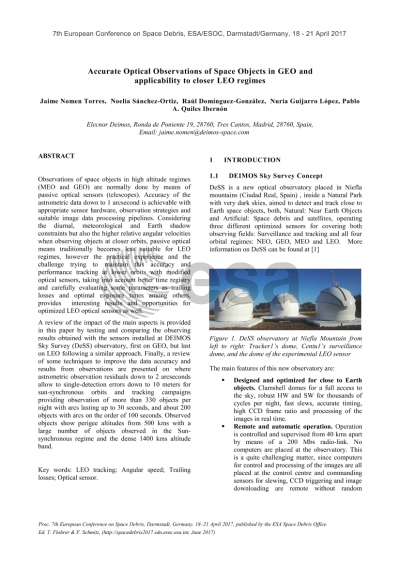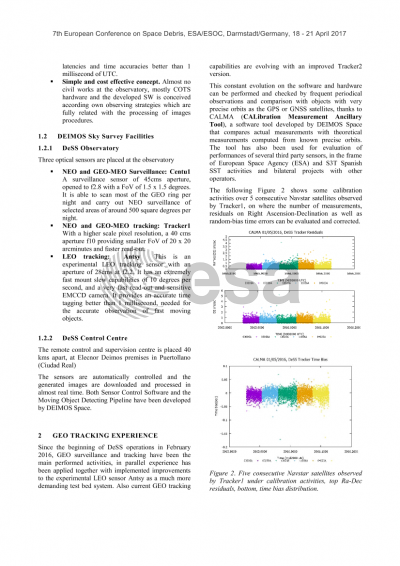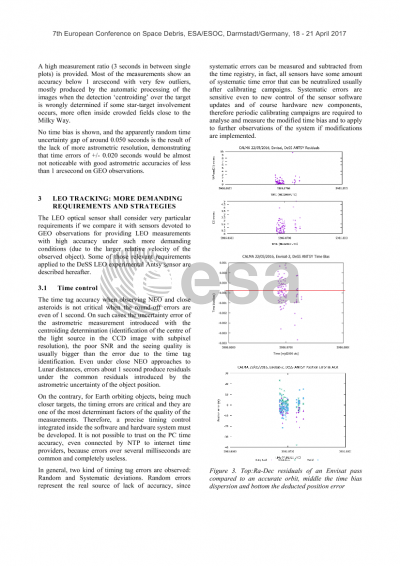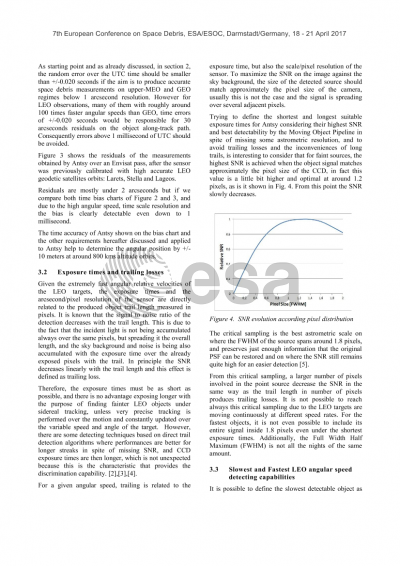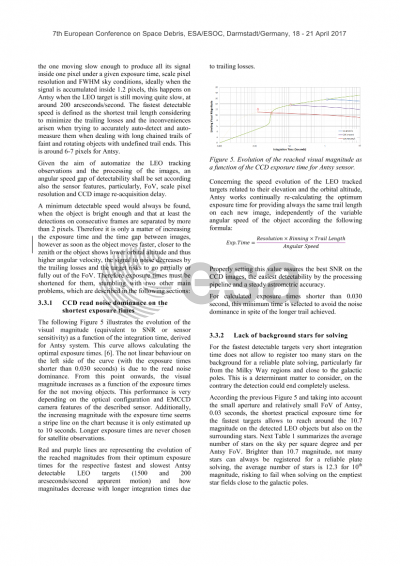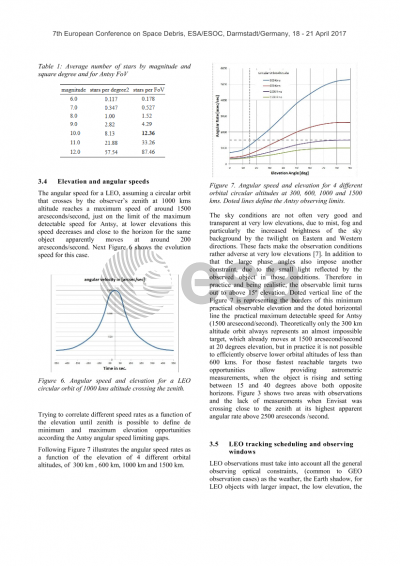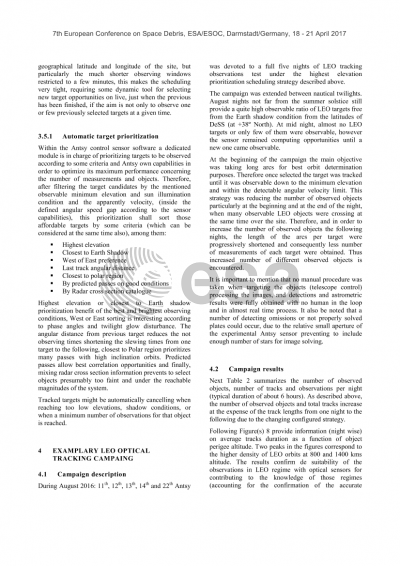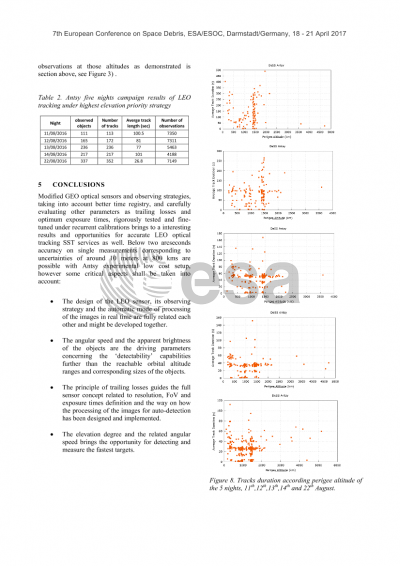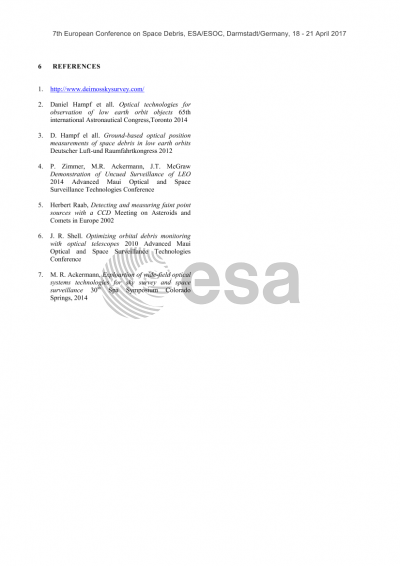Document details

Abstract
Observations of space objects in high altitude regimes (MEO and GEO) are normally done by means of passive optical sensors (telescopes). Accuracy of the astrometric data down to 1 arcsecond is achievable with appropriate sensor hardware, observation strategies and suitable image data processing pipeline. Considering the diurnal, meteorological and Earth shadow constraints but also the higher relative angular velocities when observing objects at closer orbits, passive optical means traditionally becomes less suitable for LEO regimes, however the practical experience and the challenge trying more and more (increasingly?) to maintain this accuracy and performance tracking on lower orbits with modified optical sensors, taking into account even better time registry, and carefully evaluating other parameters as trailing losses, optimal exposure times, etc, bring to interesting results and opportunities for optimized LEO optical sensors too.
A review of the impact of the main hardware aspects is provided in this paper by comparing the features and observing strategies obtained with several sensors installed at DEIMOS Sky Survey (DeSS) observatory, first on GEO, but last on LEO following a similar approach. Finally, a review of some techniques to improve the data accuracy and results from observations are presented.
Preview
